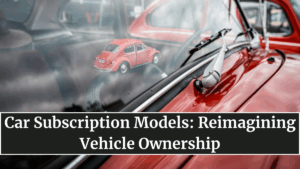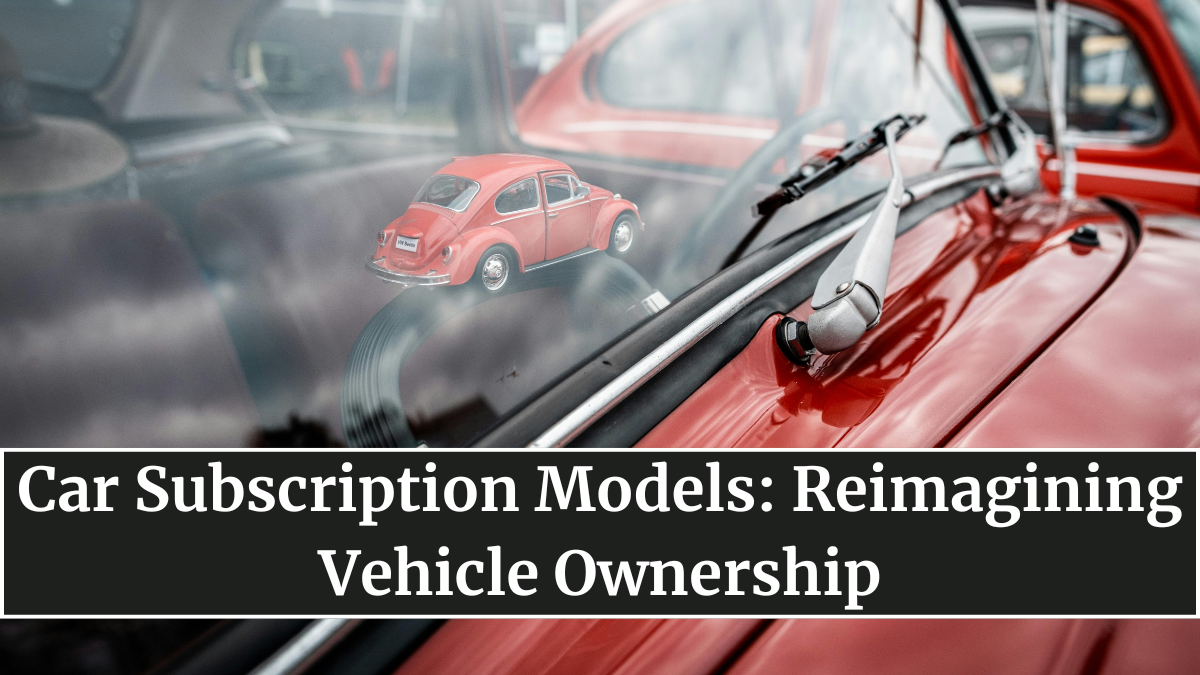For decades, car ownership followed a simple pattern — buy, lease, or finance. But in 2025, a new trend is rewriting the rules of mobility. The rise of vehicle subscription models is giving drivers unprecedented flexibility to use cars without long-term commitment. It’s a model that fits perfectly into today’s on-demand economy, where convenience, personalization, and flexibility define value.
These car subscription services blend the best of leasing and renting — a single monthly fee covers the car, insurance, maintenance, and even roadside assistance. The result? A seamless experience that’s rapidly gaining traction among urban professionals, fleet users, and younger buyers who value access over ownership.

What Are Vehicle Subscription Models?
A vehicle subscription model allows customers to access a car for a monthly fee that includes all major costs — fuel or charging (in some cases), maintenance, taxes, and insurance. Users can swap vehicles based on their needs: a compact car for weekdays, an SUV for road trips, or an EV for urban commutes.
Unlike traditional leasing, there’s no down payment, no multi-year contract, and no long-term depreciation worry. Subscribers can cancel or switch plans easily, offering true mobility freedom.
Why the Subscription Trend Is Accelerating
The appeal of this model lies in shifting consumer behavior. People are prioritizing flexibility, convenience, and sustainability over outright ownership.
Key reasons for the boom include:
-
Rising car prices: Subscriptions provide affordable access without large upfront costs.
-
Urban living: City dwellers prefer shared access models over owning a vehicle with parking hassles.
-
Rapid tech evolution: With frequent model updates, buyers avoid being stuck with outdated tech.
-
Shorter usage cycles: Perfect for people who relocate frequently or drive seasonally.
-
EV experimentation: Drivers can try electric vehicles without the fear of long-term commitment.
For many, a car subscription isn’t just a payment model — it’s a lifestyle shift toward more flexible and sustainable mobility.
Major Players Driving the Subscription Ecosystem
Both automakers and startups are expanding aggressively into subscription-based services:
| Company | Service | Key Offering |
|---|---|---|
| Volvo | Care by Volvo | Monthly all-inclusive plan with vehicle swaps and flexible terms |
| BMW | Access by BMW | Premium car rotations and maintenance-free ownership |
| Toyota | Kinto Flex | Subscription-based fleet access for individuals and businesses |
| Porsche | Drive | Multi-vehicle subscription for sports and luxury cars |
| Revolve / Zoomcar / Quiklyz (India) | Regional models | Short-term EV and SUV subscriptions for urban mobility |
This new ecosystem bridges manufacturers, fintech firms, and mobility startups to redefine how vehicles are distributed, owned, and experienced.
Benefits for Consumers and Automakers
Car subscription models are reshaping value for both sides of the equation:
For consumers:
-
No long-term financial burden or depreciation loss.
-
Access to the latest technology and safety features.
-
Freedom to swap or cancel anytime.
-
Fixed, predictable monthly costs.
For automakers:
-
Direct customer relationships beyond traditional dealerships.
-
Continuous revenue streams.
-
Valuable data on usage patterns and customer preferences.
The model encourages sustainability too, as cars remain in continuous circulation, maximizing utilization instead of sitting idle in garages.
Challenges and Future Outlook
While promising, the subscription model still faces challenges before it becomes mainstream:
-
High monthly pricing: Subscriptions often cost more than leasing in the short term.
-
Limited availability: Many regions lack large-scale fleet infrastructure.
-
Insurance complexities: Integrating coverage across different driver profiles remains tricky.
-
Regulatory barriers: Varying state or country laws complicate subscription licensing.
However, with global automakers investing in digital platforms and local startups scaling rapidly, these obstacles are being addressed. By 2030, experts predict car subscriptions could make up 10–15% of new vehicle transactions globally.
The Future of Vehicle Ownership
The automotive world is shifting from possession to participation. The concept of owning a car for years is giving way to dynamic access — an approach that mirrors the Netflix-style mobility experience.
Soon, users might manage vehicles through personalized dashboards, where AI suggests the perfect car for each day — economical for Monday’s commute, spacious for Friday’s trip. Subscription-based ownership will not only redefine mobility but also influence how cars are designed, priced, and distributed in the next decade.
The age of rigid ownership is ending. The future belongs to fluid, digital-first mobility, where the key to your next ride is a tap away.
FAQs
What is a car subscription model?
It’s a flexible mobility plan that lets you use a car for a monthly fee covering insurance, maintenance, and taxes — with no long-term ownership commitment.
How is it different from leasing?
Leasing locks you into a fixed term, while subscriptions allow you to cancel or switch cars anytime without penalties.
Who benefits most from car subscriptions?
Urban professionals, digital nomads, fleet operators, and first-time EV buyers benefit most from the flexibility and convenience of subscription plans.
Are car subscription services available in India and the USA?
Yes. Global automakers like Volvo, Toyota, and BMW, and local services such as Quiklyz and Zoomcar, are expanding across major cities.
What’s the future of car subscriptions?
By 2030, subscription-based vehicle access will become a mainstream ownership alternative, driven by digital platforms, EV growth, and evolving consumer behavior.
Click here to know more.
